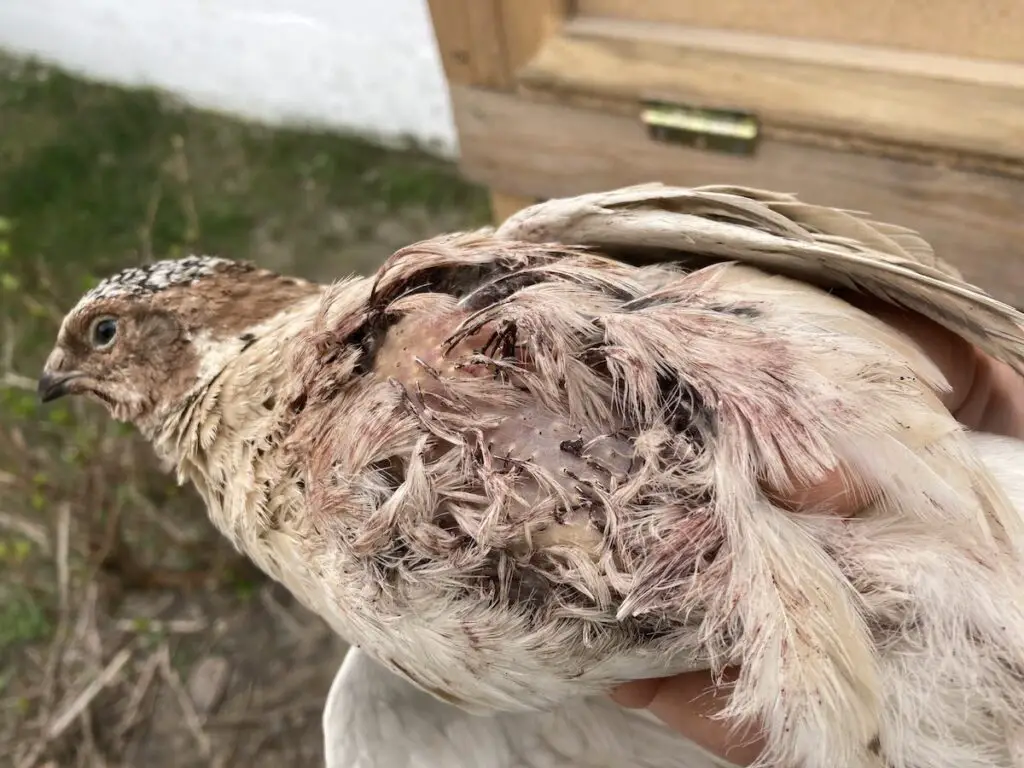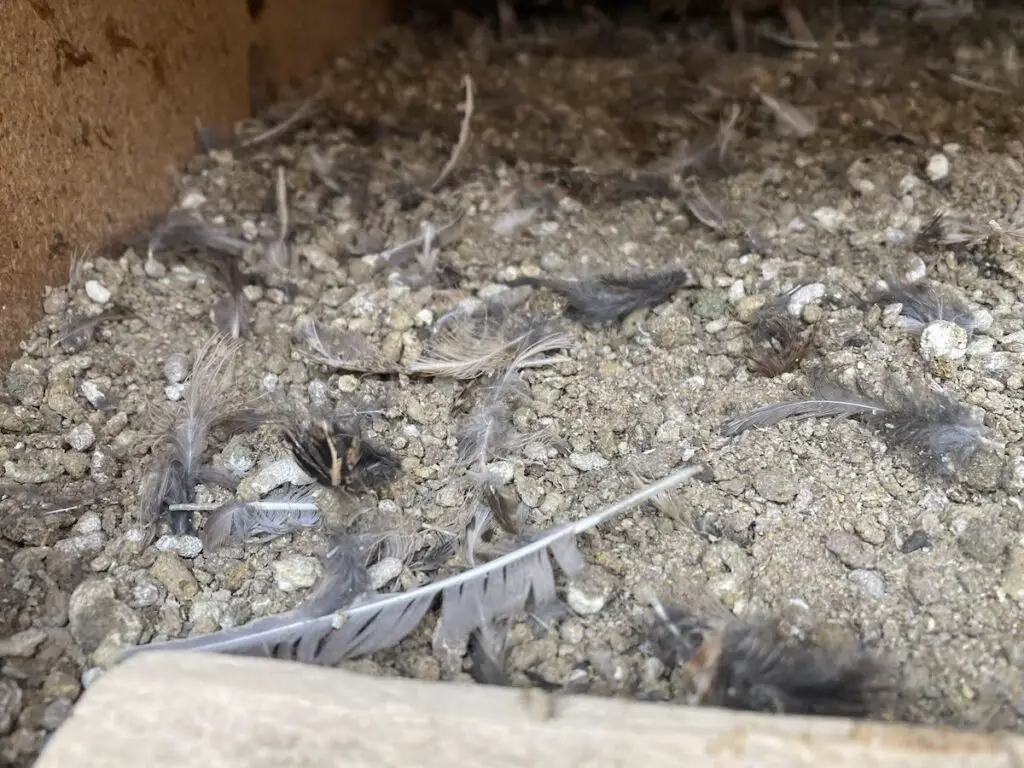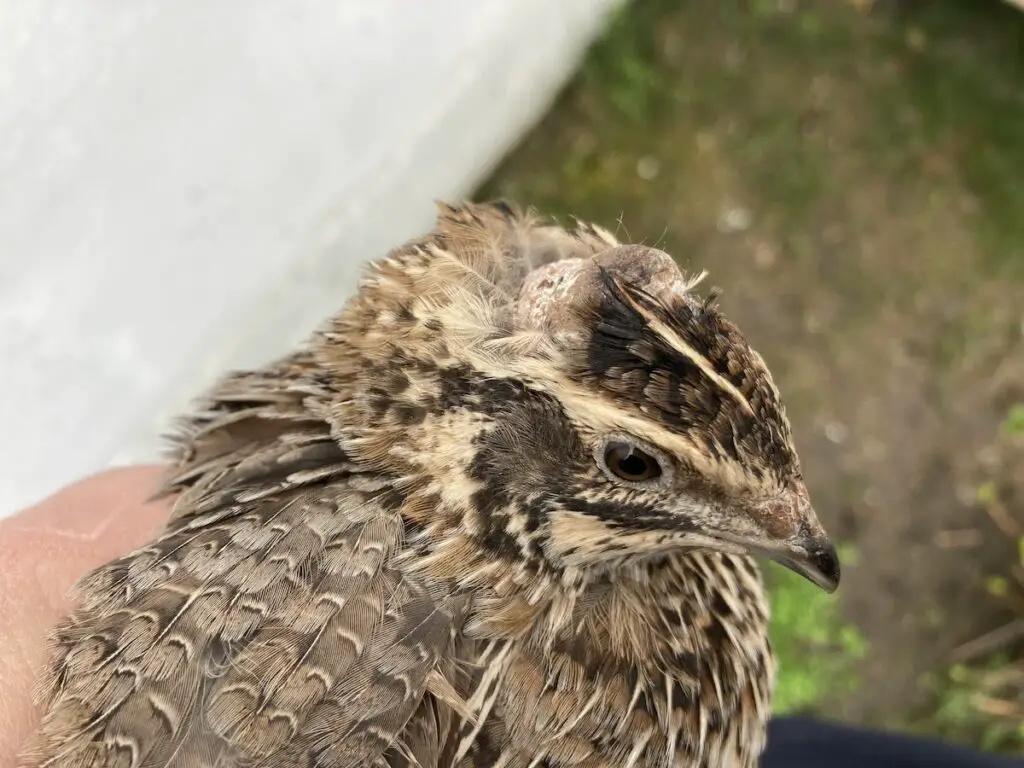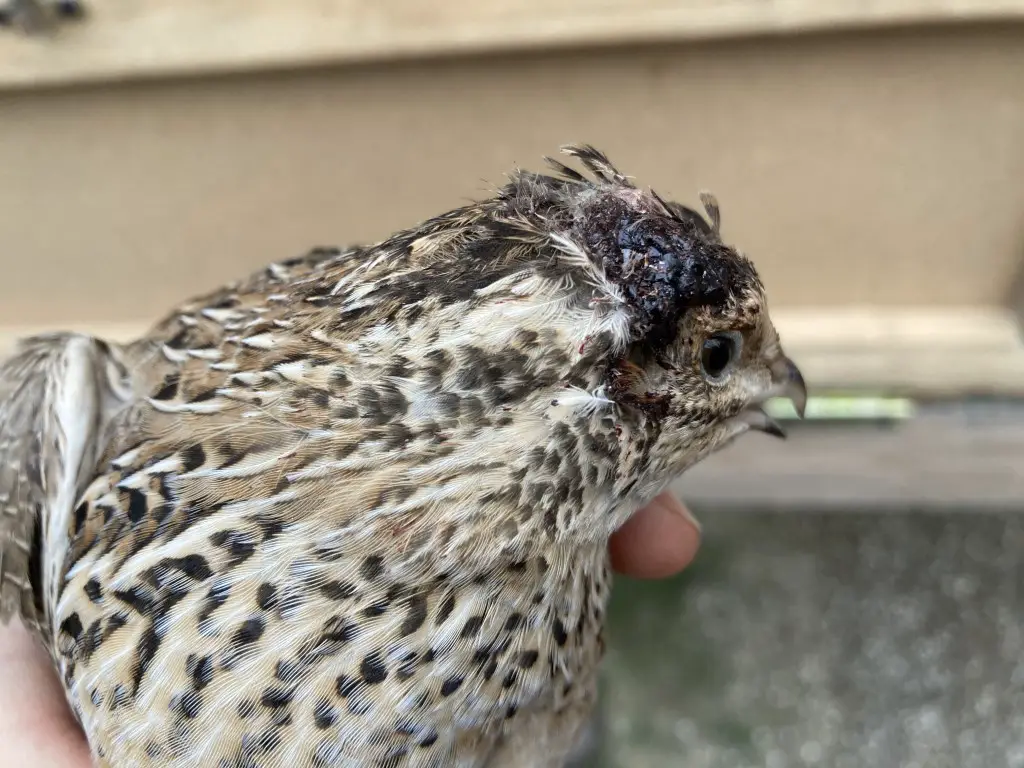Quail are easy to breed and can provide a source of meat and eggs for the family or an income for a small business. Quail also have lovely feathers that are great for arts and crafts projects, event décor, fly fishing, and pet toys.
It can be upsetting to see that your quail are losing feathers. They look thin, unhealthy, and unhappy. This may be a natural process or the result of something more sinister that needs to be investigated.
Quail can lose feathers due to molting, breeding, aggression, or illness. Depending on where they are missing feathers and by observing their behavior, you can understand if you need to take any action.
Let’s look at the main reasons in more detail.
Learn how to raise your own quail and have an unlimited supply of eggs and meat.
Molting
Molting is the shedding and replacement of old, damaged, and worn-out feathers with new feathers that are strong and healthy. Feathers provide insulation, protect the skin, and help with flight. Old feathers become thin and dry and lose their ability to insulate and protect. Molting is a natural process for most birds, including quail.
Your quail will molt from time to time after they reach around 6 months of age. Molting usually happens after the breeding season but can vary from one species to another.
You will know when your quail are molting when you see large numbers of feathers lying around in the coop. You will also notice that many birds lose feathers at the same time, so it is easy to identify that this is the process.



Molting birds look straggly and lose feathers on their backs and chests. Molting birds tend to stay away from other birds as non-molting birds sometimes like to peck at the bare skin and this can cause injuries.
The molting process takes about two weeks. During this time, your birds lose energy and egg production can slow down or stop altogether. Eggs may be small, have very thin shells, or no shells at all.
What should you do about it? You should ensure that your birds are getting adequate nutrition to help them replace lost energy. If you are not giving them a high-protein feed, this is the time to do so. A feed that is rich in protein will support their health and well-being during this time. Also, ensure that your quail are in a stress-free, safe environment and that they feel protected.
Breeding
During the breeding season, male quail may exhibit a behavior called ‘feather pulling’ or ‘plucking’. The male grabs the female by the feathers at the back of her head and hops onto her back. This action can pull out the feathers on the back of her head, leaving a bald patch.

This should not be a cause for concern. Some males, however, tend to be more aggressive than others. While this behavior is natural, excessive feather pulling can lead to injuries and stress for the female quail. It is important to monitor the behavior and provide a stress-free environment for the birds. Ensure that your quail have enough space and hiding places in the coop. If a male is consistently breeding with a particular female, introducing more females can help reduce aggression and feather pulling.
The feathers will grow back in time, and your female quail will not suffer any long-term damage.
Aggression
As cute and placid as quail seem from the outside, they can exhibit a lot of aggression towards each other (read more on quail aggression in this article). They are very territorial and they can cause serious injuries to each other.
Some birds are aggressive by temperament, but normally, it is an indicator of their being unhappy with their environment. This can lead to quail attacking one another and pulling out feathers, and even carving out each others’ eyes. I have never lost a quail due to aggression, but I’ve seen some nasty injuries.
Here are some ways quail can hurt each other.


The most severe injuries due to aggression happen to males. They either inflict it on each other or they suffer attacks from hens.
There are four main reasons that cause quail to become aggressive.
Hunger – Too little food or no food. Always ensure that your quail have access to adequate feed and fresh water.
Too many males – Try not to exceed one male to three to four females. Too many roosters in one coop will cause them to become aggressive and peck at one another.
New birds coming in – Introducing new birds into a coop can cause the existing flock to become aggressive. Quail will aim for the eyes and head of the new birds, causing feather loss and possibly more serious injuries.
Aggressive hens – You may experience a situation where you have an aggressive hen attacking smaller quail in the flock. Once you have identified the bird, it is best to remove her from the enclosure.
Stress
Quail are sensitive birds that can easily become stressed. This can be due to many factors, including
– Predator presence
– House pets like dogs and cats
– Overly hot or cold conditions
– Lack of space that leads to overcrowding
– Noise and disturbance
– Too much or too little light
Stress will cause quail to become aggressive and attack one another, and in some cases they may pluck their own feathers in an act of self-mutilation.
Mites or lice
Thankfully, I’ve never had to deal with this problem before.
Quail that have been attacked by mites display signs of self-mutilation and pluck their own feathers. Mites are small black bugs that live in quail feathers and are usually found under the wing where it attaches to the body. Mites breed in colonies and to the naked eye, appear as black patches on the skin. Mites breed fast and can quickly spread and attack many, if not all, the birds in your flock.
If you notice that your birds are less active, have a drop in egg production that is not caused by natural molting, and are plucking their own feathers, you should check for mites.
Mites can be treated with products purchased in a pet store, or with homemade remedies. Purchased products can be chemical or natural and come as powders or sprays.
Most chemical treatments contain Permethrin, a safe insect killer used by poultry owners. It can safely be sprayed directly onto the bird and in the cage to get rid of mite infestations. Natural remedies include diatomaceous earth and garlic sprays.
Lice can infest your quail coop and attach themselves to the bird’s feathers and skin and feed on its blood. Lice can cause irritation, discomfort, and anemia in quail if left untreated. Quail will pluck at their own feathers to try to remove the irritation.
Treat mite and lice infections immediately to prevent them from spreading. Clean out the cage by removing and replacing all bedding, food, water, feeders, and dust baths. Scrub the cage with soap and water and hose it down. When it is dry, spray it with poultry spray.
Do lost feathers grow back?
Feathers lost during molting will grow back. Feathers lost for other reasons will grow back if the negative conditions are corrected. The older the bird is, the longer it will take for the feathers to be replaced.
Final thoughts
If your quail are losing feathers due to molting, this is natural and you have nothing to worry about. If the feather loss is caused by other reasons, you should take steps to remedy the conditions as soon as possible. Non-molting feather loss is a sign that your quail are unhappy and stressed, and that is not what you want!

